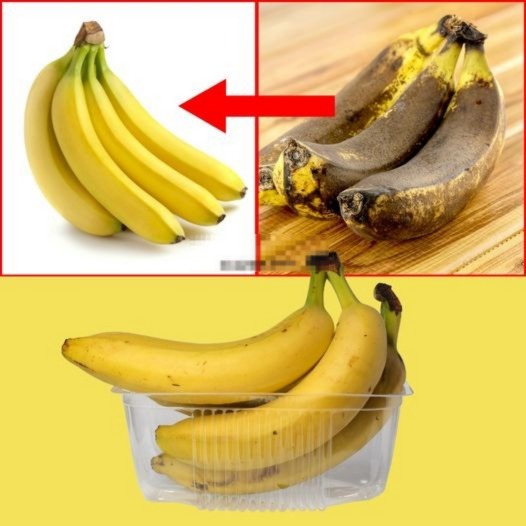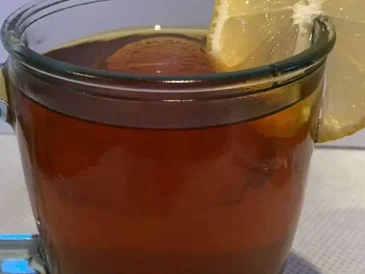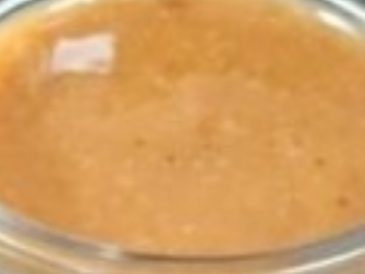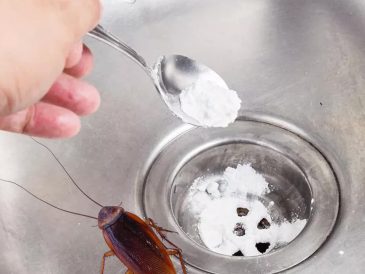Bananas are a beloved fruit staple in many households, offering convenience, flavor, and nutrition all wrapped up in nature’s most convenient packaging. Whether you grab one for breakfast, toss it in a smoothie, or bake it into banana bread, bananas are truly versatile. However, they come with one major drawback: bananas seem to spoil incredibly quickly, often going from green to brown within a frustratingly short period. Once they pass the point of no return, they become mushy, spotty, and less appealing, contributing to unnecessary food waste.
This all-too-common problem has led many people to wonder if there is a reliable way to prolong the life of bananas. The good news? Yes, there is! By using a simple and practical technique involving plastic wrap, you can slow down the ripening process and keep bananas fresh for longer. Imagine being able to enjoy your bananas for days (or even weeks!) longer than usual, saving both money and reducing food waste. In this guide, we’ll dive into the details of how you can make your bananas last longer and keep your kitchen organized.
The Problem with Rapidly Ripening Bananas
Before we get into the solution, let’s first understand why bananas ripen so fast in the first place. Bananas are classified as climacteric fruits, which means that they continue to ripen even after being harvested. This ripening process is driven by the release of a natural hormone called ethylene gas. Ethylene promotes ripening, which in turn transforms the starches in bananas into sugars, making the fruit softer and sweeter. However, this process quickly snowballs, and before you know it, you’re left with brown bananas that are past their prime.
Unfortunately, this ripening process doesn’t stop when bananas are placed in your fruit bowl. Bananas grouped together in a bunch will release and trap ethylene gas, leading to faster ripening for all the fruit in close proximity. The more ethylene a banana is exposed to, the faster it will deteriorate. The results? Mushy bananas, an invasion of fruit flies, and an unpleasant smell.
How to Extend the Shelf Life of Bananas: The Plastic Wrap Method
Now that we’ve uncovered the root cause of banana spoilage, let’s focus on the solution. By managing the amount of ethylene gas the bananas are exposed to, you can significantly slow down the ripening process and extend their freshness. The method we’ll discuss below can keep your bananas fresh for much longer than usual, reducing food waste and helping you save money.
Here’s a step-by-step guide to the plastic wrap method:
Ingredients and Tools You’ll Need:
- Fresh bananas (preferably just-ripe or slightly green)
- Plastic wrap or plastic bags
- Scissors (for cutting the plastic wrap)
- A fruit bowl or designated counter space
Step-by-Step Instructions:
Step 1: Separate the Bananas
The first thing you want to do is separate the bananas from the bunch. Why? Bananas produce ethylene gas through their stems. When grouped together, the gas becomes concentrated, which accelerates ripening. By separating each banana, you minimize ethylene exposure to the surrounding fruit.
- Inspect the Bunch: Look closely at the bananas to determine where the natural separation points are.
- Carefully Separate: Gently pull each banana away from the stem without bruising the fruit. A gentle twist usually works best.
Step 2: Wrap the Stems
The stem of the banana is where most of the ethylene gas is released. By wrapping the stems in plastic wrap, you can slow down the emission of ethylene and thus slow down the ripening process.
- Cut Plastic Wrap: Using scissors, cut small pieces of plastic wrap, just large enough to wrap around each stem.
- Wrap the Stems Tightly: Securely wrap the plastic around the stem of each banana. Make sure it’s tight but not so tight that it damages or bruises the fruit.
Step 3: Store at Room Temperature
Bananas ripen best at room temperature, so after wrapping the stems, place the bananas in a designated spot on your counter or fruit bowl.
- Choose a Cool, Dry Spot: Avoid placing the bananas near windows where they could be exposed to direct sunlight or heat, as this can speed up the ripening process.
- Avoid Refrigeration: Cold temperatures from the refrigerator can cause the banana skin to turn brown or black, although the fruit inside remains intact. Refrigeration is better suited for bananas that are already ripe.
Step 4: Monitor Daily
While this method will significantly slow down the ripening process, you’ll still want to check your bananas regularly to make sure they’re not overripening or being forgotten.
- Check Ripeness: Take a moment each day to inspect the bananas. Once they reach your desired level of ripeness, you can peel and eat them, use them in recipes, or store them in the refrigerator or freezer.
- Reapply Plastic Wrap if Necessary: If the bananas are ripening too fast, feel free to adjust the wrap and check that it’s still securely covering the stems.
Why Does This Method Work?
The success of this method boils down to controlling the release of ethylene gas. Bananas produce this gas primarily through their stems, and by creating a barrier with plastic wrap, you effectively slow down the ripening process. Separating the bananas further reduces the amount of ethylene gas trapped around them. Together, these two steps help keep bananas fresh for much longer than simply leaving them in a bunch on the counter.
Additional Tips to Keep Bananas Fresh
While the plastic wrap method works like a charm, there are several other tricks and variations you can try to keep your bananas fresh:
1. Use Silicone or Reusable Produce Bags
If you’re looking for a more eco-friendly option, consider using reusable silicone bags or produce bags to cover the stems instead of plastic wrap. These bags are durable, easy to clean, and help reduce plastic waste.
2. Refrigerate Ripe Bananas
Once your bananas have reached the ripeness you prefer, you can place them in the refrigerator to prolong their freshness for another few days. Keep in mind that while the skins will turn brown, the fruit inside will remain fresh.
3. Freeze Bananas for Long-Term Storage
If you’ve got too many bananas and they’re starting to overripen, peel them and store them in a freezer-safe bag. Frozen bananas are perfect for smoothies, baking, or even as a natural ice cream substitute.
Can You Actually Keep Bananas Fresh for Two Years?
While the claim of keeping bananas fresh for up to two years might sound far-fetched, it’s important to clarify that this refers more to freezing bananas for long-term storage rather than keeping them on the counter for such a period. Bananas that are properly peeled, sliced, and frozen can be stored for up to two years without losing their nutritional value or taste. Frozen bananas are excellent for smoothies, baking, and other culinary uses, so don’t hesitate to freeze your bananas if they’re getting too ripe!
Conclusion: A Simple Trick to Stop Wasting Bananas
Bananas are an affordable, nutritious, and versatile fruit, but their tendency to ripen quickly can be frustrating. Luckily, with this simple plastic wrap method, you can extend the life of your bananas, avoid waste, and enjoy fresh fruit for longer. By wrapping the stems and separating the bananas, you can slow down the release of ethylene gas and delay the ripening process. Combined with refrigeration and freezing options, you’ll never have to toss out overripe bananas again.
Next time you bring home a bunch of bananas, give this method a try. Not only will you keep your fruit fresh for longer, but you’ll also save money, reduce food waste, and enjoy perfectly ripe bananas whenever you want!




